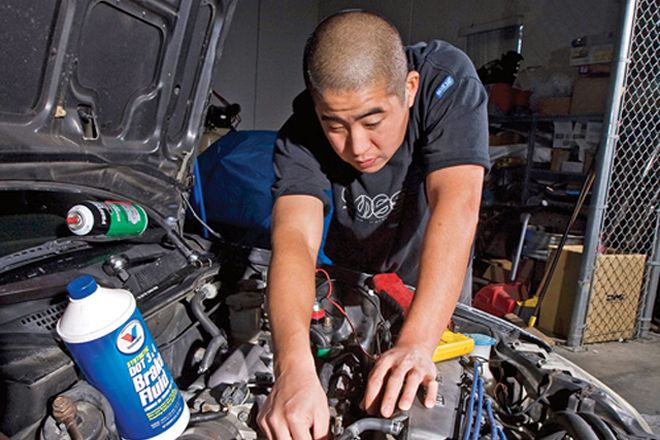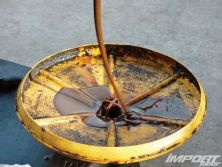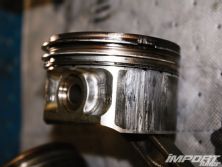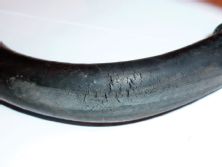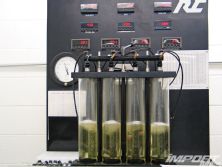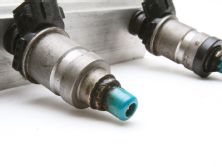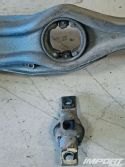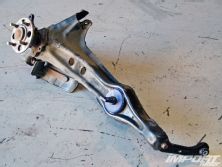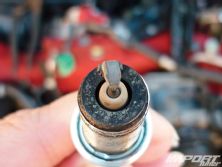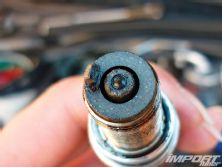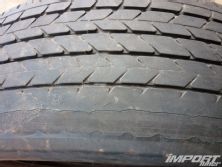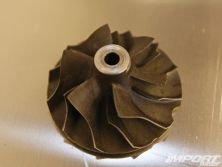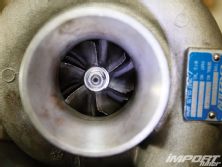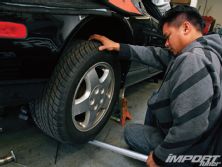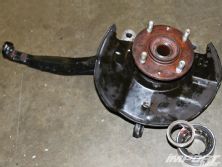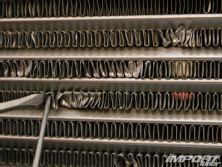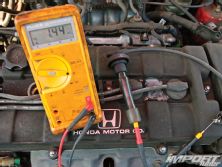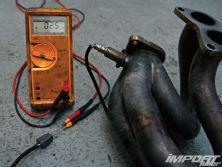Automotive maintenance is something most of us ignore, until one day your car suddenly stops in the middle of the highway or begins blowing plumes of smoke from the tailpipe and we wonder what went wrong. Maintenance determines the longevity, performance, and reliability of the vehicle you drive. The best part of maintenance is that it does not require any sophisticated understanding of vehicles or their systems. It may seem intimidating, but is often a simple matter of popping open the hood and taking a look around. A few steps, some regular checks, and addressing issues promptly can greatly extend the life of your vehicle.
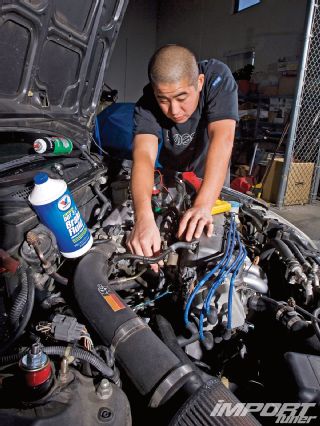 |
10 Must-Know Maintenance Tips - Before You Break It, Fix It
|
10 Must-Know Maintenance Tips - Before You Break It, Fix It
Checking your engine oil should be a vital part of your car's regular maintenance schedule. Oil is what keeps the engine running smoothly. If you fail to keep that oil clean and topped off, you will definitely run into engine wear problems in the future. The general rule of thumb is if it's black, get an oil change. If it's brown, get an oil change soon. If it's white or mocha-colored, it can be a sign that a blown head gasket is leaking coolant into the cylinders and mixing with the oil.
As the engine accumulates mileage, blowby increases. This dumps more unburned fuel into the crankcase, which dilutes the oil and causes accelerated wear on engine components such as bearings and pistons, not to mention a loss of performance and fuel economy. Companies such as Blackstone Laboratories offer free test kits to send your oil in for analysis, to gauge the health of an engine.
Fuel lines rarely need replacement, but over time rubber will begin to age and harden, developing cracks and leaks. When they begin to go bad, the results can be catastrophic. Vibrations, rubbing against other components, or impact can all cause an old line to rupture or crack, leading to engine fires or fuel starvation.
Clean fuel injectors are a must for peak engine performance, fuel economy, and emissions. Dirty injectors lack the necessary means to deliver proper amounts of fuel, and cannot maintain the correct spray pattern that is essential for efficient combustion. Injectors are exposed to extreme heat which evaporates fuel from the injector surface at engine shutoff, leaving gasoline distillates to build up and bake on the nozzle, impeding the flow of fuel.
The harder you drive your car, the more often injector service and cleaning are required. A typical routine checkup of injectors at 100,000 miles is recommended on daily driven street cars, (turbo RX-7 owners should have their injectors cleaned every 50,000 miles, due to higher engine temperatures). Companies such as RC Engineering specialize in inspecting, cleaning, and flowing injectors of all sizes for both street and race applications.
Control arms manage the orientation of the wheels in relation to the chassis and are important parts of your vehicle's suspension system. Too much free play and you and your passengers will find yourselves feeling car sick, not to mention excessive wear and tear that worn-out control arms can cause to the rest of the suspension system. The most common signs of a worn control arm bushing is a dull clunk or heavy click from one side of the car when moving from a stopped position or applying the brakes. Heavy vibration from the chassis at speed is also a good indicator that your bushings might be compromised. Other factors can cause clunking sounds, so you should also check the integrity of bushings visually or with a pry bar. There should be zero movement. Companies like Super Pro offer polyurethane replacement inserts to repair those torn bushings, while improving your vehicle's handling.
Check all fuel hoses, including metal fuel lines, for stress fractures or corrosion. This image of a cracked fuel line was taken from an '05 STI with less than 6,000 miles on the odometer.
A lot can be learned about what is happening in the combustion process by properly reading each spark plug-a must for any kind of performance tuning. Reading spark plugs can also give you an early indication of a problem that may be just beginning. In a properly tuned engine, the plug tips should exhibit a tan or brown hue. A black or ashy soot texture on the insulator indicates overly rich air/fuel ratios (AFRs), while very light tan or white, blistered insulators may point to an AFR that is too lean. Not all spark plugs are created equal. With a little research, purchasing the proper spark plugs that work for your custom engine setup can deliver optimal spark.
The cleaner of the two plugs here might indicate a well running car, but upon closer inspection, each tells us a series of events occurring within its engine. Note the insulator's white porcelain upper and lower half are showing two shades of colors in the top picture. The top half of the porcelain indicates a good AFR at wide-open throttle (WOT), while the bottom of the plug where the porcelain reaches below the steel body is a lighter color, indicating leaner AFRs at mid-range engine speeds. The dark deposits on the edge of the threaded body indicate the engine running slightly rich at idle.
Melted or missing electrodes, as well as a destroyed insulator, are obvious indications that something has gone seriously wrong with the engine. The mangled spark plug to the right suffered what is referred to as sustained pre-ignition. If you come across this scenario, check for an incorrect heat range plug, over-advanced timing, lean AFRs, or deposit accumulation inside the combustion chambers. If you happen to see a spark plug like this in your engine, you'd better look for possible internal engine damage to the pistons, cylinder walls, valves, rings, etc. This particular plug was pulled from cylinder number four of our project STI the day after its engine blew and caught fire on the track.
The way your tires wear is a good indicator of the condition of other parts of the suspension. Abnormal wear patterns are often caused by the need for simple tire maintenance, or for a front-end alignment. Learning to read the early warning signs of trouble can prevent wear that shortens tire life or indicates the need to have other parts of the car serviced. Tire wear on the inner tread is most often caused by excessive camber or toe in the suspension, which puts too much load on the inside of the tire. The car may simply need to have the wheels aligned, but misalignment can also be due to old or worn-out springs, ball joints, or control arm bushings.
Although rare, turbo failures do happen. Most failures are oil related but can be caused by a number of problems including age, thrust bearing failure from low oil pressure, or improper blow-off valve adjustment or size. A loss in power and low boost can be traced to a cracked or tight-spinning center cartridge, broken or seized wastegate, broken compressor shaft, or damaged wheel. Foreign object or dirt ingestion (dusting) can cause inlet blades to round off or become damaged, if an air filter isn't used.
Periodically remove your filter or inlet pipes and check the radial play of the input shaft by gently moving it back and forth. If there is more than normal (about 0.5 mm) of play on either side of the shaft, it's out of balance and requires service to keep the journal bearings from wearing out.
Wheel bearings perform two very important jobs in a vehicle's suspension. They allow free wheel movement and support the vehicle's weight. To be able to do both of these jobs, the bearings' seals must be leak-free and keep the lubricant inside the bearings, and contaminants out. Wheel bearings need to be replaced when the seals have been compromised or emit a low howling noise that increases with speed, while driving. Things to look for when inspecting wheel bearings are loose or broken tapered rollers, scored race or roller surfaces, or excessive play in the assembly.
The most common way to check your vehicle's wheel bearings is by jacking up the car and grabbing the wheel at the 12 o'clock and 6 o'clock position and rocking the tire back and forth. If the wheels show any signs of play, you know it's time to replace the old bearings and inspect suspension bushings. An alterative test is to place the vehicle on a set of jack stands while positioning a pole under the tire. Use the pole as leverage between the wheel and ground, and push upwards to feel for excessive lateral wheel movement.
Intercoolers improve efficiency and power in turbo applications by rapidly radiating heat from the compressed intake charge before it enters combustion. Intercooler fins play a crucial role in the intercooler's ability to keep your vehicle's intake temperatures cool. Over time, the intercooler's fins can bend or clog from road debris and rocks, causing a disruption in airflow.
Using a pair of flat-head screwdrivers and plenty of patience, methodically wedge the bent fin between both flat ends of the two screwdrivers and press together to straighten them back to their original shape. A pair of wide-tip tweezers can also help speed up the process.
Spark plug wires send thousands of volts from an engine's distributor to its spark plugs. Because of this huge electrical load, the spark plug wire is subject to immense heat which, over-time, will degrade in construction. A bad spark plug wire may create so much resistance that the voltage never reaches the plug. A break in the insulation may cause the spark to arc to a grounding point, resulting in weak or no spark in the cylinder, making your car run rough and causing engine misfires, thereby allowing unburned fuel to harm catalytic converters.
Using a screwdriver placed into a wire's end and grounding it to check for spark is a commonly used method among mechanics, but it doesn't test a wire's resistance. The most effective method is to use an ohmmeter to check for a short circuit or a breakdown of insulation. Wires should be replaced if their resistance measured end-to-end with an ohmmeter exceeds OEM specifications.
The oxygen (O2) sensor's main function is to monitor AFRs so the ECU can maintain the lowest possible emissions, while delivering the best fuel economy with the greatest possible power. As an O2 sensor ages, it doesn't react as quickly as it once did. The increased lag time makes the sensor sluggish and prevents the engine from keeping AFRs optimal. If the engine burns oil or develops an internal coolant leak, the sensor element may become contaminated, causing the sensor to fail. Faulty oxygen sensors can cause engine misfires, pinging, poor gas mileage, increased emissions, and decreased power.
O2 sensors can be diagnosed using a scan tool or code reader to pull codes from OBDII vehicles, while check-engine light "flash codes" are relied upon with older vehicles. If an O2 sensor problem is suspected, the sensor's response and voltage output can be monitored using an ohmmeter. We measured the primary wideband O2 sensor from an '08 Subaru STI that read 2.5 ohms. Referring to the service manual, we found our O2 to be in good condition-voltage higher than five ohms requires immediate replacement. We should note that the rear O2 sensor on the STI is a narrowband unit that should be replaced if shown to read less than 30 ohms. O2 sensors can vary by manufacturer and should be cross-referenced with your factory service manual to ensure proper testing procedures and voltage reference.

